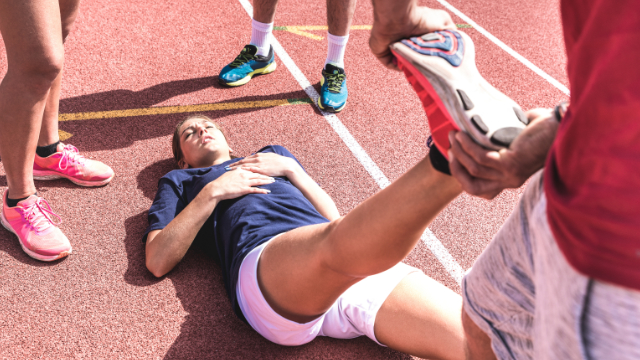
As we explained in our first newsletter this month, sports injuries are unfortunate but also a common occurrence for athletes. A range of factors can contribute to an athlete’s risk for injury, including their participation in a higher level of activity without first preparing through a tailored training program.
Returning to any sport after an extended absence can be dangerous no matter what physical condition you happen to be in. The reason is that even if you’re in good shape, your body may not be prepared for the particular dynamics involved in the sport. Every sport requires a very specific set of movements, and in order to perform them, specific areas of the body need to be appropriately prepared with proper strength and flexibility. Overworking any muscle groups or ligaments that are not yet adapted to these movements can result in damage to these structures and injury.
The pandemic has temporarily suspended most organized sports, because of this there is likely to be an uptick in sports injuries when things return to normal circumstances. Without organized sports functioning now, many individuals have not been keeping up with the same level of training as they had before the pandemic. If they jump back into their sport too aggressively, it could prove to have a dangerous outcome. Below are some of the most common sports–related injuries that may be seen frequently during the return to the sporting world ahead:
- Baseball: sprains and tears of the ulnar collateral ligament, Little League elbow and Little League shoulder
- Softball: shoulder tendinitis, back and/or neck pain
- Tennis: tennis elbow, rotator cuff injuries
- Golf: back pain, golfer’s elbow, shoulder pain
- Track & field/running: runner’s knee, jumper’s knee, IT band syndrome
- Swimming: swimmer’s shoulder, hip pain, back pain
- Lacrosse: ACL tears, muscle strains
- Soccer: strains and sprains to the lower leg, especially the ACL
Why you should see a physical therapist first and fast
If an injury does occur, the smartest and safest decision you can make is to see a physical therapist right away. Physical therapists are movement experts with a thorough understanding of the biomechanics involved in all sports. As such, they can help patients prepare for the demands of their respective sport to prevent injury, and if an injury does occur, guide them through a comprehensive rehabilitation program. All programs are personalized to the unique demands of each patient’s particular sport, as well as their tolerance to various interventions, abilities, and goals. As a result, the management plan will differ from patient to patient, but a general overview of this process follows:
- First, your physical therapist will perform a thorough interview and physical examination to identify the source of your pain and establish a diagnosis
- Next, he or she will assess your strength, flexibility, agility, and endurance to develop a better sense of your current fitness level
- In addition, you’ll be asked additional questions about the sport you participate in, your level of involvement, and what you’d like to achieve through physical therapy
- Based on all of this information, your therapist will create an individualized treatment program designed to target your limitations and impairments
- Treatment may involve stretching and strengthening exercises, joint mobilization, soft tissue mobilization, and sport–specific interventions that mimic the dynamic movements involved in your respective sport
- The intensity of the program will gradually increase based on your progress
- Your physical therapist will determine when you’re ready to return to your sport and if any additional precautions are needed upon your return
Seeing a physical therapist is the safest and most effective way to recover from a sports–related injury and doing so quickly has been associated with better outcomes. This is why we strongly recommended consulting with us if you notice any signs of pain or soreness at any stage in your return to sports participation.
